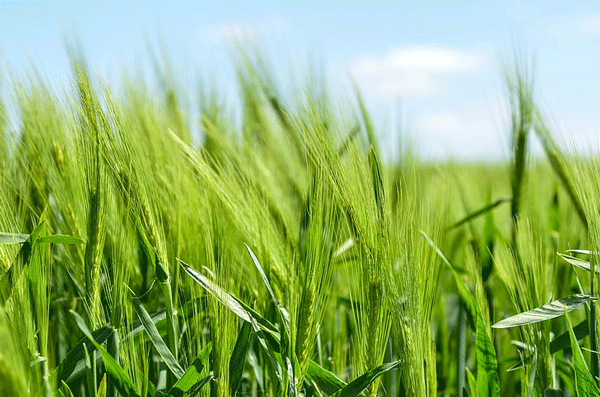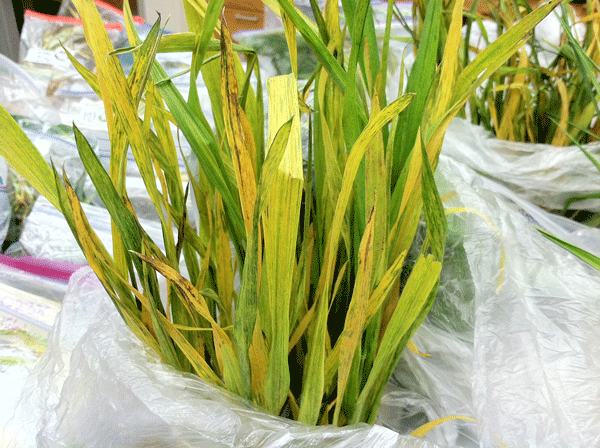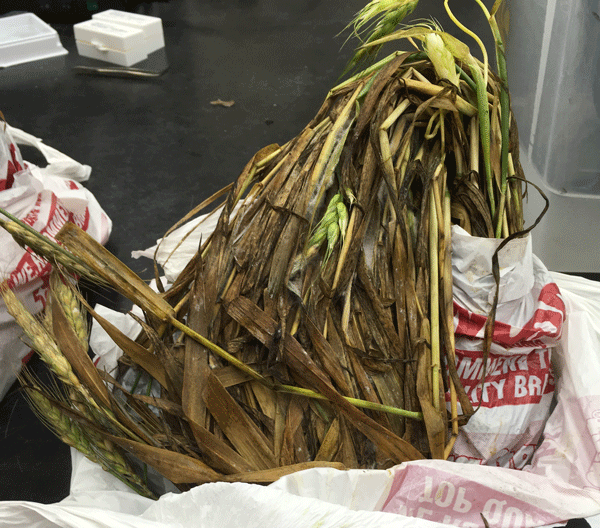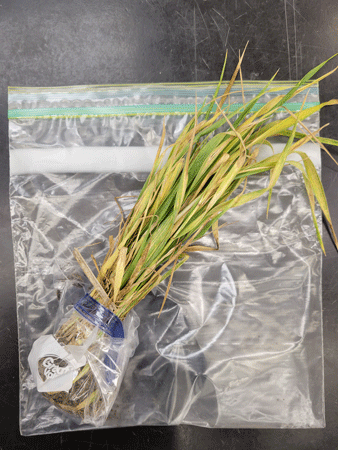Quality diagnostics begins with the person collecting the sample. The ideal sample submission includes the ENTIRE plant (both healthy and sick plants), root systems bagged separately, images of symptoms, plants, and fields, and ample information related to the symptoms and production system practices.
“The Good”
- Submit healthy/non-symptomatic plants.

Remember to label your bags. Shipping can cause “bag blight,” it is important to know which plants looked healthy before going into the mail.
“The Sick”
- Submit sick/symptomatic plants.

Remember to provide as much information as possible on our sample submission form. This includes information such as variety/hybrid, planting date, date the problem first appeared, field history, pesticide usage, etc.
“The Ugly”
- AVOID poor quality samples.

Samples degrade quickly in the mail, especially when using USPS as this carrier takes longer. The sample shown above was sent via USPS Priority Mail and took eight days to arrive. Samples that arrive in this kind of condition are extremely challenging to work with.
To save time and money, use the recommendation below to avoid “The Ugly”:
- Dig up plants and bag root system separate from aboveground material.
- Use two plastic bags – one for the root system and one for the entire plant.
- Avoid leaf material contacting soil (keeps sample integrity).
- Collect and ship on the same day.
- If this is not possible, hold plant material in the refrigerator until it is able to ship.
- Avoid collecting a sample and storing it on the dash of the truck.
- Ship overnight using UPS or FedEx.
Overall Sample Submission Guidelines

High quality samples lead to high quality diagnoses.
- Collect and ship samples on or before Wednesday to avoid weekend storage
- Collect healthy and symptomatic plants (labeled)
-
- Collect the entire plant.
- Dig up the plant to keep the root system intact.
- Bag roots separately to avoid contact with leaves.
- Place bagged roots and above-ground materials in a larger plastic bag (see above photo).
- Label and use plastic bags instead of paper, and do NOT add water. This maintains the sample integrity.
- Collect the entire plant.
- Once collected:
- Fill out submission form with as much information as possible. Include variety/hybrid info (especially for wheat).
- Ship plants ASAP overnight via UPS or FedEx when possible. USPS can take up to 14 days.
- Send photos to clinic@ksu.edu with the tracking number or date shipped.
- 3 types of images
- Symptom/problem close up and in focus.
- Entire plant from ground level to top of plant.
- Site – capture the pattern in the field, transition areas, terraces, etc.
- 3 types of images
If you have any questions, please contact us via clinic@ksu.edu or 785-532-6716.
Chandler Day, Row Crop Diagnostician, K-State Plant Disease Diagnostic Lab
chandlerday@ksu.edu
Tags: disease Plant Disease Diagnostic Lab sample collection